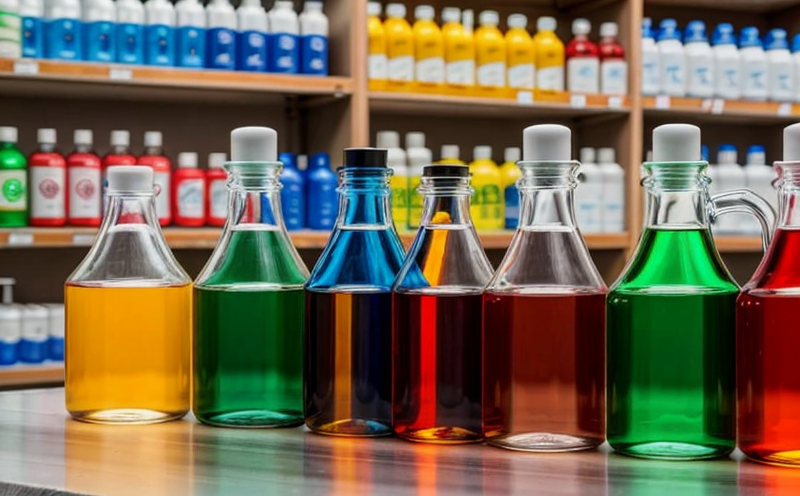DIN 54231 Determination of chlorinated phenols in textiles
The DIN 54231 standard is a crucial method used to determine the concentration levels of chlorinated phenols (CPs) in textile materials. Chlorinated phenols are known for their toxic properties and can pose significant risks if present in consumer products. This test ensures compliance with safety regulations, particularly relevant for industries dealing with textiles that come into direct contact with human skin.
The method involves several key steps to ensure accurate results. The first step is the preparation of textile samples by cutting them into small pieces suitable for analysis. It’s important to note that sample preparation can significantly affect the accuracy of the test, thus careful handling and standardization are essential.
The testing process itself requires precise measurement techniques. After preparing the samples, they undergo extraction using a solvent capable of dissolving chlorinated phenols efficiently without affecting other components in the textile material. The choice of solvent is critical as it directly impacts the sensitivity and accuracy of the results obtained.
Following extraction, the solution containing the dissolved CPs is subjected to various analytical techniques such as gas chromatography or high-performance liquid chromatography (HPLC). These methods allow for the separation and quantification of different chlorinated phenol compounds present in the sample. The precision and accuracy of these instruments play a pivotal role in delivering reliable results.
The DIN 54231 standard also sets specific limits on acceptable levels of chlorinated phenols depending on the intended use of the textile product. For instance, textiles used in children's clothing or medical equipment have stricter limits compared to those for general household items. Adhering to these limits is not only a legal requirement but also ensures consumer safety and protects against potential health hazards.
Quality managers and compliance officers must stay updated on such standards as they are constantly evolving to keep pace with new scientific findings and changing regulatory landscapes. By implementing DIN 54231, organizations can demonstrate their commitment to maintaining high-quality products that meet international safety standards.
In summary, the DIN 54231 test is a vital tool in ensuring textile safety by identifying chlorinated phenols at potentially harmful concentrations. Its implementation helps protect consumers and ensures compliance with stringent regulations across various sectors.
- Textile producers benefit from early detection of problematic compounds.
- End-users receive safer products that comply with international standards.
- R&D engineers can refine their processes to eliminate unwanted substances.
- Procurement teams gain confidence in purchasing safe materials.
Applied Standards
DIN 54231 is part of a broader set of standards aimed at ensuring the quality and safety of textiles. It aligns with other international standards such as ISO, ASTM, EN, and IEC to provide a comprehensive framework for textile testing.
- ISO 17025: Laboratory accreditation requirements
- ASTM D3985: Standard test method for chlorinated phenols in water by gas chromatography
- EN ISO 14001: Environmental management systems - Requirements with guidance for use
- IEC TS 62677-1: Electromagnetic compatibility (EMC) of medical devices and equipment - Part 1: General requirements
The alignment of DIN 54231 with these international standards ensures consistency and reliability in textile testing across different markets. This harmonization is particularly beneficial for global manufacturers who need to meet diverse regulatory requirements.
Benefits
The implementation of DIN 54231 brings numerous benefits to various stakeholders involved in the textile industry:
- Enhanced Product Safety: By identifying chlorinated phenols early, manufacturers can take corrective actions before releasing potentially harmful products into the market.
- Compliance with Regulations: Adhering to this standard helps textile companies meet stringent regulatory requirements and avoid costly penalties associated with non-compliance.
- Reputation Enhancement: Demonstrating commitment to product safety through rigorous testing can significantly enhance a company's reputation among consumers and industry peers.
- Innovation Opportunities: Early detection of problematic compounds allows R&D teams to innovate safer alternatives, potentially leading to new products or improvements in existing ones.
Overall, adopting DIN 54231 contributes to a safer, more responsible approach to textile manufacturing, ultimately benefiting all parties involved from raw material suppliers to end-users.





